

In the previous article, I've claimed that the biggest danger of Roam is not being systematic with your note taking, which can lead to having notes that are not valuable.
Zettelkasten is a system that helps with that. It enables network effects for your notes: the value of your database starts increasing, instead of decreasing with each added note.
How to take smart notes explains the Zettelkasten system, which consists of the following steps:
In this article, I would like to explain how I apply rules 1-4 of Zettelkasten when using Roam. Article is not the right medium for explaining steps 5-8 and Nat Eliason has already done a great job with his article outline video.
Using Roam without Zettelkasten would probably mean that:
Having thoughts directly in the daily notes means that we would have something like this:
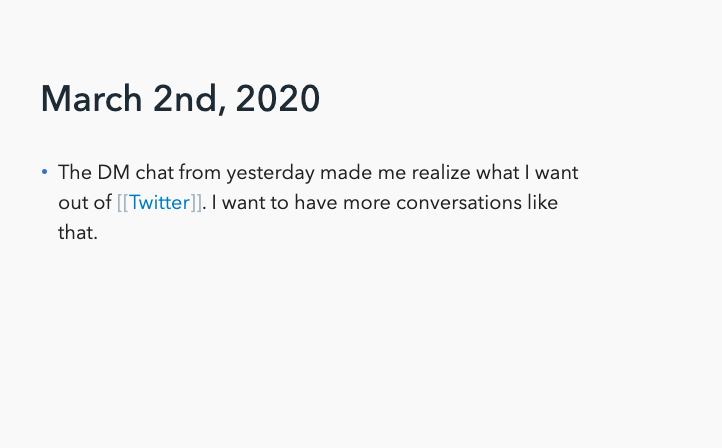
This means that we would have to go through all daily notes in order to find out what we were thinking. Step 3 of Zettelkasten, which we do in a second pass, in which we link previous ideas to this one, would become harder if we did it this way.
Instead of this, let's nest this thought under [[Thoughts]]:
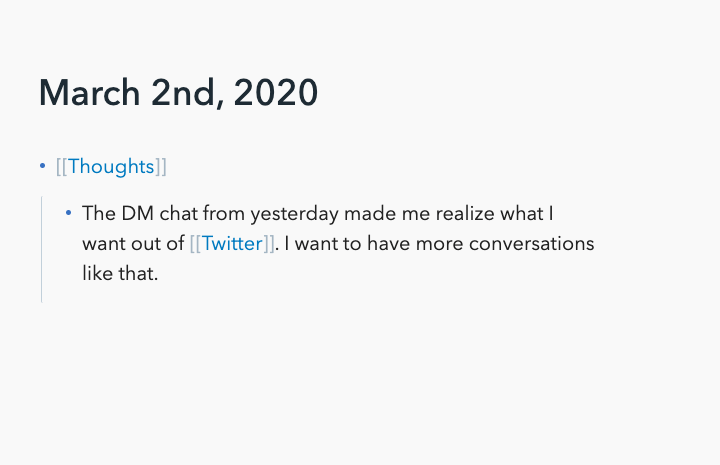
If we now navigate to [[Thoughts]], we will be able to see this thought linked to it:
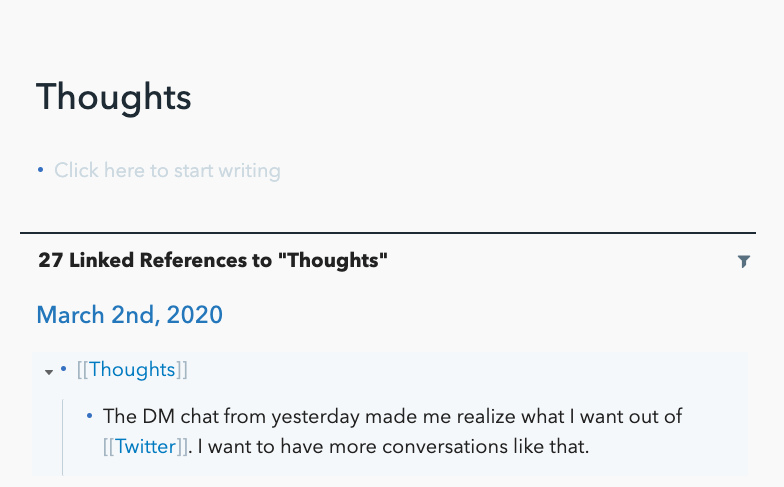
This makes it easier to link similar ideas in the second pass:

Prior to applying Zettelkasten to Roam, I've used to store my notes in a new page for every book or other piece of content that I've read.
This looked like this:
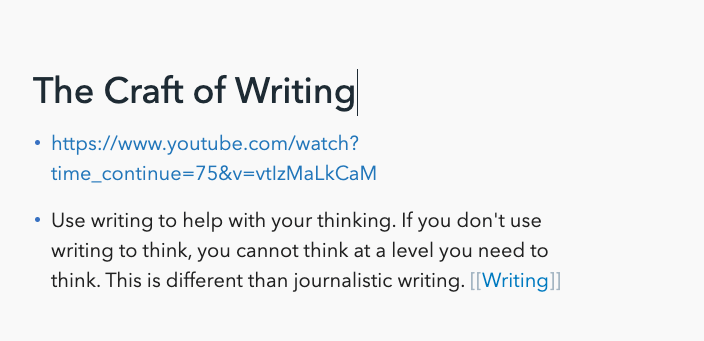
The problem with this is, again, the discoverability of these literature notes. They are only visible if we specifically go to this page, which makes the step 3 of Zettelkasten harder.
Instead of this, let's write our literature notes in a daily note, under [[Thoughts]]:
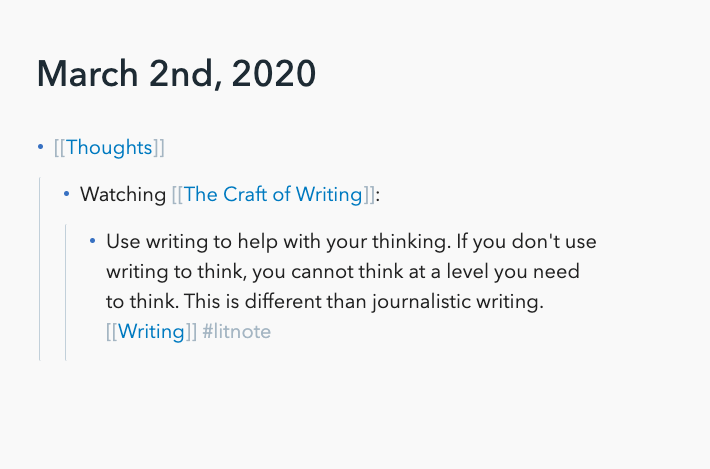
This makes this literature note more discoverable, since now it's going to be listed as a linked reference in [[#litnote]]. We also give this literature note more context: specify the title of the book or video it's related to, nest it under [[Thoughts]], and add it as a daily note, so we know the date when we added it.
This makes the step 3 of Zettelkasten very easy:
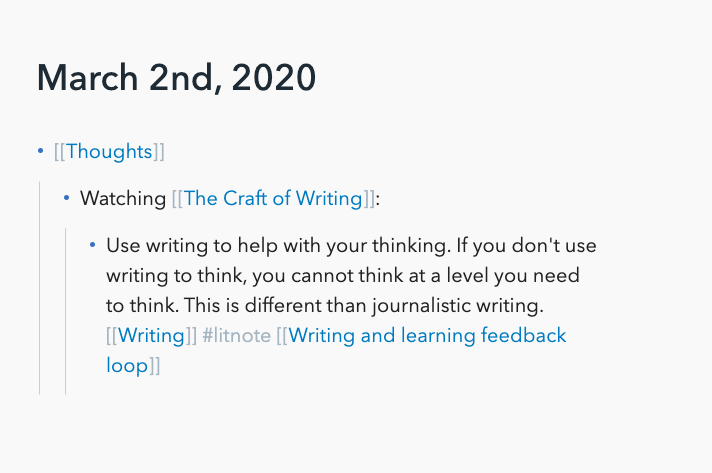
Now that we have linked literature notes to relevant ideas, it's time to create permanent notes from them, or implement the step 4 of Zettelkasten. I'm following Shu Omi's approach here and using the same format for every permanent note.
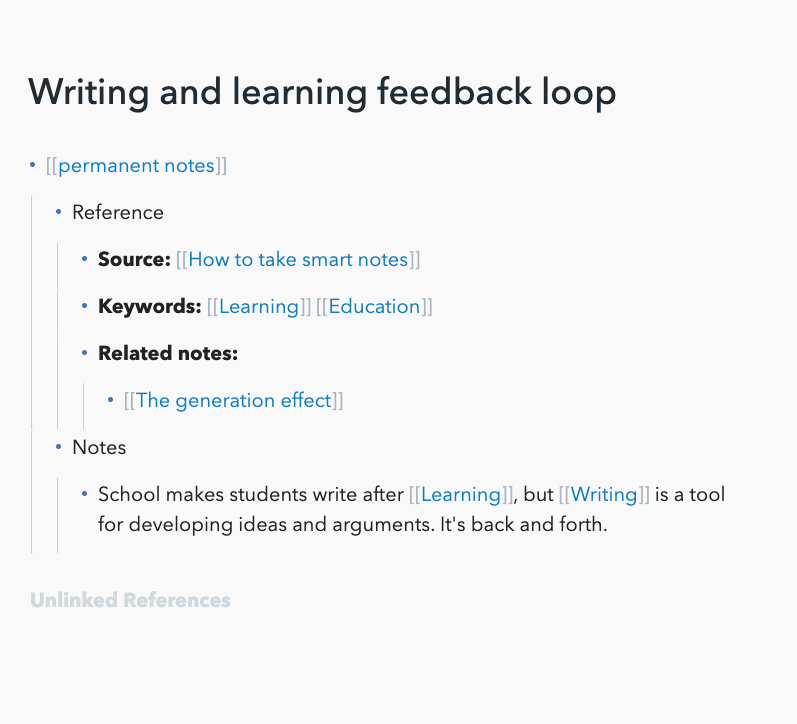
Putting everything in the permanent note under [[permanent notes]] makes all the permanent notes listed on that page, which is really useful for finding related notes.
